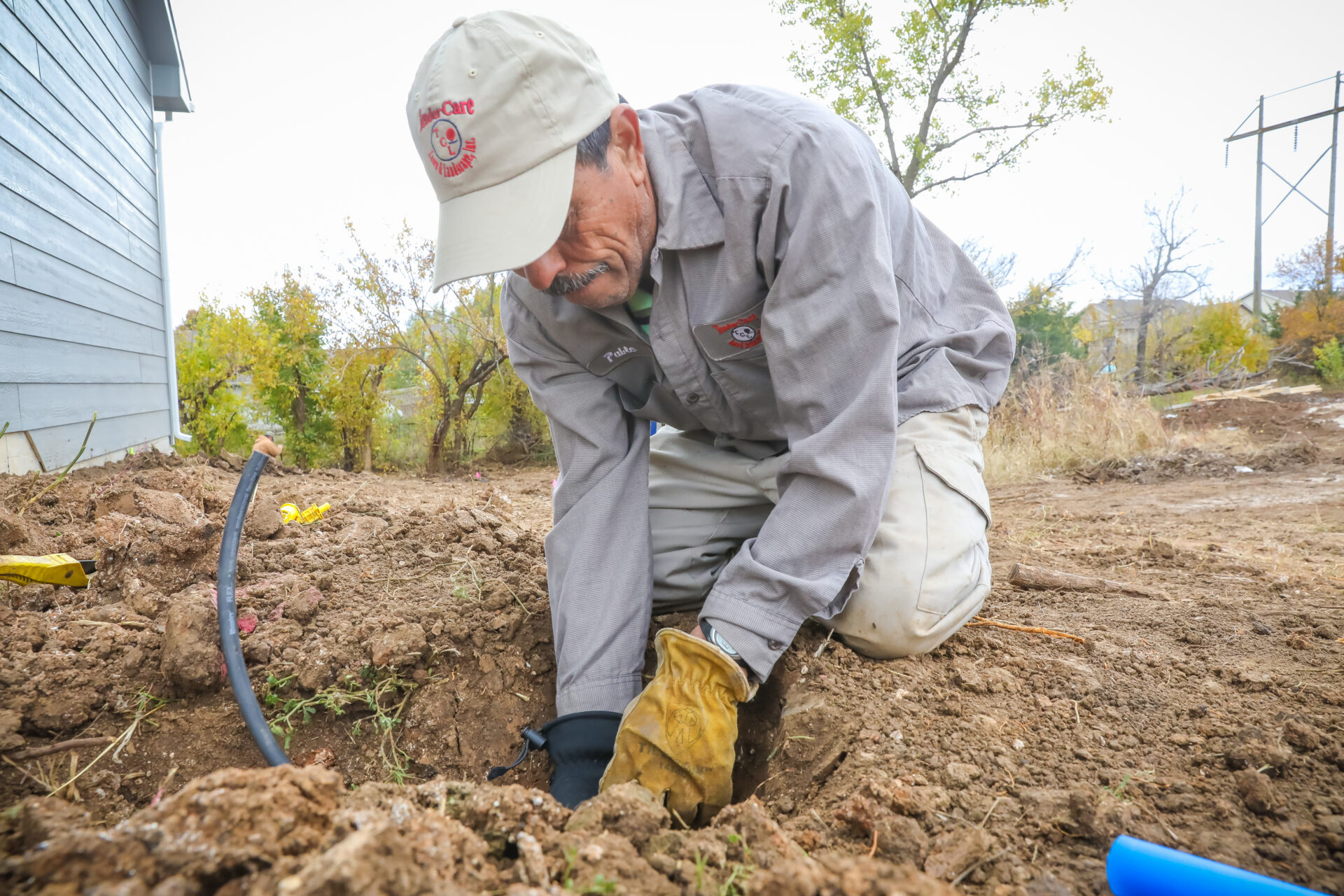
Sprinkler Install
Keeping Your Lawn Healthy All Year Long
Stay one step ahead of mother nature with a sprinkler system from TenderCare. With the harsh weather conditions of Kansas, you should not take chances when it comes to the irrigation of your lawn and landscaping.
Beautiful lawns and landscapes depend upon the proper degree of moisture to allow them to stay beautiful and healthy throughout the harsh months of summer and into fall for a healthy lawn and landscape all year long.
Our irrigation experts specialize in matching the right irrigation method, such as micro misters for landscaping and spray and rotors for grass and lawn.
We also provide for proper head spacing and precipitation rates for your particular situation using rain sensors and timers for the most efficient usage of moisture to ensure that you have a beautiful lawn and landscape that will wow the neighbors and save on water usage.

Frequently Asked Questions
-
What Is The Difference Between Poly And PVC Pipe?
Poly is a flexible yet strong material that holds up to the harsh conditions present in an irrigation system very well. PVC is a strong rigid material with minimal flex that holds up moderately well under conditions present in an irrigation system. When deciding which is the best pipe for the installation, you have to consider several things.
First, is the system going to be trenched or plowed? Second, what are the GPM requirements of the system? Third, is the system going to be used year round or does it have to be winterized?When plowing a system, the machine causes a lot of bending on the pipe and therefore does better with poly, while trenching can use either effectively. Poly pipe is most efficient at 1” diameter (21gpm or less), while PVC sizes allow good operation at multiple sizes and GPM. Lastly, poly pipe being more flexible is less susceptible to freeze damage than PVC and holds up better to resin breakdown over time when the pipe is not full of water.
-
What is better, plowing or trenching?
Both methods have their benefits depending on the installation. Plowing is used primarily to install pipe of 1” in diameter or less into the ground, while trenching can be used to install pipes of any sizes. Plowing is the best option for existing and new yards alike due to the fact that they cause minimal ground disturbance during installation, whereas trenching digs a ditch that tears up the ground and ultimately has to settle and be repacked multiple times after installation.
-
What sprinkler heads are available and which is best for me?
Sprinkler heads come in two basic classifications — rotors and sprays — although the classifications have multiple styles and types.
- SPRAY
- The spray sprinkler sprays water over the entire area to be watered the entire time it is watering. In other words, the spray pattern does not move back and forth like a rotor. Spray sprinklers come with interchangeable nozzles to provide varying radius and arc choices. While most spray sprinklers do pretty much the same job, there is a big difference in the quality of seals and ability to “pop down” reliably, so be sure to get commercial grade versions.
- Most are designed to pop up out of the ground when the sprinkler system is activated.
- Good for small to medium area watering
- Has a “High Application Rate” dispersing a lot of water in a short time
- Heads come in different spray pattern diameters
- Rectangle and square spray patterns are available
- More suitable for even surfaces
- ROTOR
- Rotors are sprinklers that shoot a jet of water. The stream is moved back and forth across the area to be watered. Over a period of time, the water distribution is uniform. Rotors usually have a relatively low precipitation rate, so one station of rotors can cover a large area. Open case impact rotors are used less and less due to debris entering the cases and obstructing moving parts and effecting proper precipitation rates.
- Has a “Low Application Rate” dispersing less water but more evenly across plants and grass
- Great for larger and/or sloping landscapes
- Waters on part of an area at a time, slowly watering the entire area
- Interchangeable nozzles to create throw patterns for different needs
- Good for medium to large area watering
-
What is a PVB?
A PVB is a device that is installed on your irrigation system to guard against drinking water contamination from chemicals or other hazards found on your lawn. The PVB is required by the water department and must be tested once a year by a licensed tester to ensure proper operation. The device has to be installed at least a foot above the highest water point of your irrigation system and must be installed by a licensed professional.
-
What do I have to do when winter comes?
In our region of the USA, we have to blow out the sprinkler system to protect against water damage due to freezing temperatures. When winter comes, you need to contact your irrigation contractor to schedule a blow out of your system. In the event freezing temperatures come before your system is winterized, you can help guard against freeze damage by turning your irrigation clock off and wrapping your PVB with insulation or a blanket. Although the only way to prevent the freeze damage is to give your irrigation contractor plenty of notice that you need your system winterized so they can have it done before the cold weather arrives.

SAVE ON YOUR WATER BILLS WITH AN EFFICIENT IRRIGATION SYSTEM!

Stay Connected
Sign up for our email list and stay up to date with the latest news and events!